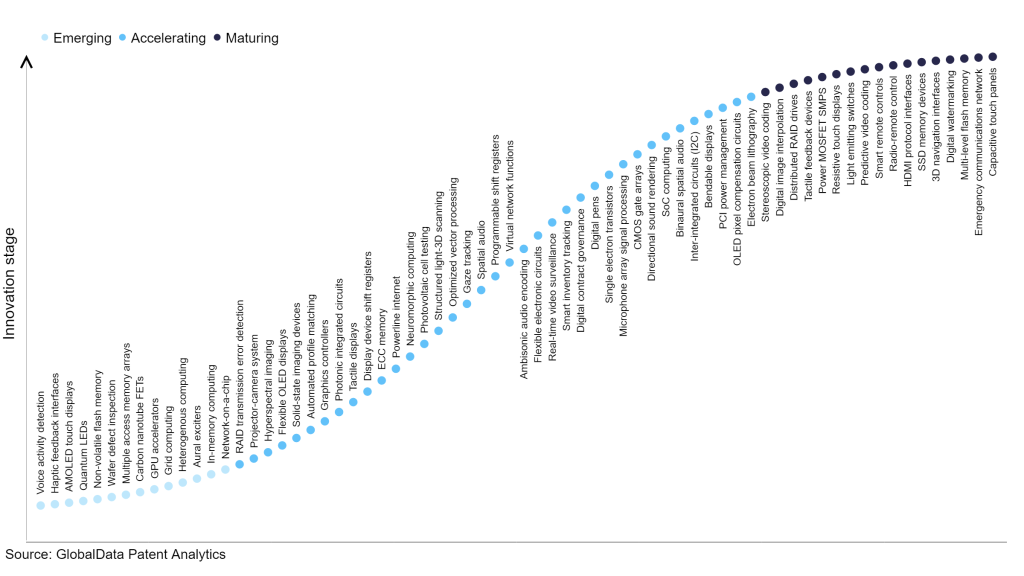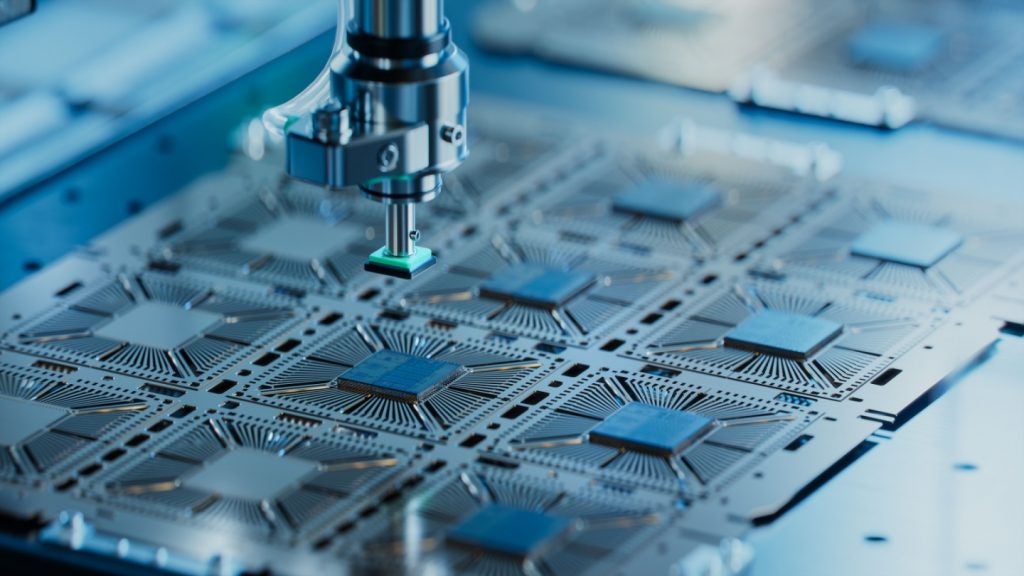The technology industry continues to be a hotbed of patent innovation. Activity is driven by the importance of immersive user experiences in gaming, virtual reality, and simulations, along with advancements in haptic technology, and growing importance of technologies such as such as vibration, force feedback, and electrostatic forces, to simulate textures and shapes on screens. In the last three years alone, there have been over 4.1 million patents filed and granted in the technology industry, according to GlobalData’s report on Innovation in technology: tactile displays. Buy the report here.
However, not all innovations are equal and nor do they follow a constant upward trend. Instead, their evolution takes the form of an S-shaped curve that reflects their typical lifecycle from early emergence to accelerating adoption, before finally stabilizing and reaching maturity.
Identifying where a particular innovation is on this journey, especially those that are in the emerging and accelerating stages, is essential for understanding their current level of adoption and the likely future trajectory and impact they will have.
190+ innovations will shape the technology industry
According to GlobalData’s Technology Foresights, which plots the S-curve for the technology industry using innovation intensity models built on over 1.5 million patents, there are 190+ innovation areas that will shape the future of the industry.
Within the emerging innovation stage, network-on-a-chip, in-memory computing, and aural exciters are disruptive technologies that are in the early stages of application and should be tracked closely. Electron beam lithography, OLED pixel compensation circuits, and PCI power management are some of the accelerating innovation areas, where adoption has been steadily increasing. Among maturing innovation areas are capacitive touch panels and emergency communications network, which are now well established in the industry.
Innovation S-curve for the technology industry

Tactile displays is a key innovation area in technology
Tactile displays refer to systems or devices designed to offer haptic feedback, allowing users to experience tactile sensations via touch. These displays utilize diverse technologies to produce vibrations or pressure that can be sensed, enhancing user interaction or conveying information beyond visual or auditory means. This technology is particularly valuable for individuals with visual impairments, promoting a more inclusive and accessible digital interaction.
GlobalData’s analysis also uncovers the companies at the forefront of each innovation area and assesses the potential reach and impact of their patenting activity across different applications and geographies. According to GlobalData, there are 80+ companies, spanning technology vendors, established technology companies, and up-and-coming start-ups engaged in the development and application of tactile displays.
Key players in tactile displays – a disruptive innovation in the technology industry
‘Application diversity’ measures the number of applications identified for each patent. It broadly splits companies into either ‘niche’ or ‘diversified’ innovators.
‘Geographic reach’ refers to the number of countries each patent is registered in. It reflects the breadth of geographic application intended, ranging from ‘global’ to ‘local’.
Patent volumes related to tactile displays
Source: GlobalData Patent Analytics
Among the companies innovating in tactile displays, Immersion is one of the leading patents filers. The company’s patent describes the system and method pertaining to a rotary control mechanism within a device. This includes a knob, a shaft connected to the knob for rotational movement, and a base supporting the shaft. A sensor, linked to the base, detects various aspects of knob manipulation such as position, speed, force, rotational rate, duration, or a combination thereof. Additionally, a mechanical haptic system, situated between the base and the shaft, imparts tactile feedback based on knob movement relative to the base. Furthermore, an electronically programmable actuator, connected to the knob, delivers electronic-based haptic force feedback. Other prominent patent filers in the space include Nokia and Apple.
In terms of application diversity, Meta Platforms leads the pack, while Inventus Engineering and French Alternative Energies and Atomic Energy Commission stood in second and third positions, respectively. By means of geographic reach, Meta Platforms held the top position, followed by Philips and Fiserv.
Tactile displays play a crucial role in human-computer interaction by providing a sense of touch to digital experiences. They enable a more immersive and inclusive interaction, benefiting various applications including accessibility for individuals with visual impairments, virtual reality, and remote-control systems. To further understand the key themes and technologies disrupting the technology industry, access GlobalData’s latest thematic research report on Technology.
Premium Insights
From

The gold standard of business intelligence.
Blending expert knowledge with cutting-edge technology, GlobalData’s unrivalled proprietary data will enable you to decode what’s happening in your market. You can make better informed decisions and gain a future-proof advantage over your competitors.




